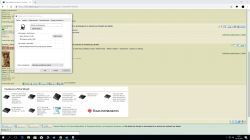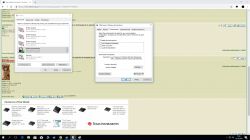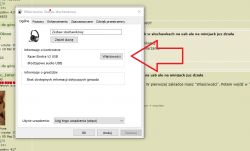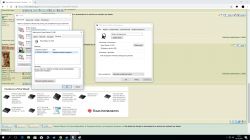FAQ
TL;DR: Razer Electra V2 USB no sound? Windows 10 (version 1703) added a built‑in USB Audio 2.0 driver, and "Windows 10, version 1703, provides a class driver for USB Audio 2.0 devices." Fix by reinstalling the USB audio driver, using rear ports, and setting Default. For Windows users whose USB headsets show up but play no audio. [“USB audio 2.0 drivers”]
Why it matters: It helps you quickly restore audio on USB headsets that are detected but silent, without buying unnecessary hardware.
Quick Facts
- Windows 10 version 1703+ includes the USB Audio 2.0 class driver (usbaudio2.sys), so most USB headsets work without vendor drivers. [“USB audio 2.0 drivers”]
- USB 2.0 ports supply up to 500 mA; use a direct rear motherboard port to meet this power budget. [“Universal Serial Bus Revision 2.0”]
- Razer Electra V2 USB works as a standard USB Audio device; Synapse enables enhancements like virtual surround. [“Razer Electra V2 USB | Support”]
- Set the headset as both Default Device and Default Communications Device so apps route audio correctly. [“Fix sound problems in Windows”]
How do I fix no sound on my Razer Electra V2 USB headphones in Windows 10?
Check Sound settings: set the USB headset as Default Device. Verify app output device. Run the Windows audio troubleshooter. Unplug and reconnect to a rear USB port. Reboot the PC. If still silent, remove and reinstall the device driver via Device Manager, then test again. [“Fix sound problems in Windows”]
Windows sees my USB headphones in Playback but there’s no audio—what should I try next?
Open Sound settings, select the headset, and click Set Default. Disable “Allow applications to take exclusive control” in the device properties. Check per‑app volume in Volume Mixer. Test with a different media app. Then run the audio troubleshooter. [“Fix sound problems in Windows”]
Where do I find the Events tab to check the device status?
Right‑click the speaker icon > Sounds > Playback. Right‑click your USB headset > Properties. Open the Events tab to review driver install status and messages. [Elektroda, Anonymous, post #17505448]
Razer installer shows 14/14 modules but doesn’t detect the headset—what does that mean?
It indicates the software installed, but the device was not detected by the installer. Replug to a rear USB port, then reopen the installer. If detection still fails and Windows shows no audio output from the headset, suspect device or cable failure. [Elektroda, oooDuDiooo, post #17505573]
Will a PCIe sound card (e.g., Creative Audigy FX) fix a USB headset with no sound?
No. USB headsets include their own DAC/amp and bypass the motherboard or PCIe sound card. Installing a discrete card will not restore USB‑headset audio. The thread reporter added an Audigy FX and USB audio still failed. [Elektroda, oooDuDiooo, post #17505361]
Could Windows 10 simply not support these headphones?
Support is built‑in. "Windows 10, version 1703, provides a class driver for USB Audio 2.0 devices." Ensure your build is 1703 or newer, then reinstall the USB audio device. [“USB audio 2.0 drivers”]
How do I clean‑reinstall the USB audio driver?
- Unplug the headset.
- In Device Manager, expand Sound, video and game controllers, right‑click the USB Audio Device, choose Uninstall device, check Delete driver software.
- Reboot, plug into a rear USB port, and set it as Default in Sound settings. [“Update drivers in Windows”]
My USB headphones worked, then suddenly lost sound mid‑game—what causes that?
A driver or USB stack glitch can drop audio and mic unexpectedly. Unplug and replug on a rear port, then reinstall the device. Test on another PC to rule out hardware. The thread author reported mid‑game loss of both audio and mic. [Elektroda, oooDuDiooo, post #17505848]
Why does the volume slider jump between 0 and 100 on the USB headset?
That behavior suggests the device isn’t responding correctly to volume changes, usually due to a faulty or incomplete driver state. Reinstall the USB Audio device, then set it as Default and test again. [Elektroda, oooDuDiooo, post #17505361]
Should I try a different USB port or hub for my headset?
Yes. Use a rear motherboard USB port for maximum stability and power. USB 2.0 ports can deliver up to 500 mA, which many headsets require. Avoid unpowered hubs during troubleshooting. [“Universal Serial Bus Revision 2.0”]
Razer Synapse doesn’t detect my Electra V2 USB—what should I do?
Install the latest Synapse that supports your model. Confirm Windows lists the headset as a USB Audio device and set it as Default. If Windows sees only power (LED) but no audio device on multiple PCs, contact Razer Support for repair options. [“Razer Electra V2 USB | Support”]
How do I set my USB headset as the default device in Windows?
Open Sound settings. Under Output, choose your USB headset and click Set as Default. Also set it as Default Communications Device. Test app audio and communications separately after applying changes. [“Fix sound problems in Windows”]







